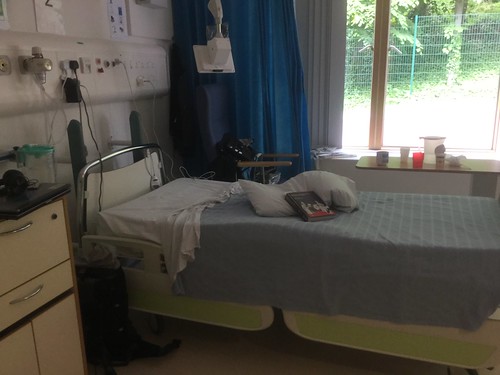It turns out that it wasn't an attack against the NHS itself, just a wide scale ransomware attack which combined click-through installation and intranet propagation by way of a vulnerability which the NSA had kept for internal use for some time.

The NHS got decimated for a combination of issues:
- A massive intranet for SMB worms to run free.
- Clearly, lots of servers/desktops running the SMB protocol.
- One or more people reading an email with the original attack, bootstrapping the payload into the network.
- A tangible portion of the machines within some parts of the network running unpatched versions of Windows, clearly caused in part by the failure of successive governments to fund a replacement program while not paying MSFT for long-term support.
- Some of these systems within part of medical machines: MRI scanners, VO2 test systems, CAT scanners, whatever they use in the radiology dept —to name but some of the NHS machines I've been through in the past five years.
What went wrong?
Issue 1: The intranet. Topic for another post.
Issue 2: SMB.
In servers this can be justified, though it's a shame that SMB sucks as a protocol. Desktops? It's that eternal problem: these things get stuck in as "features", but which sometimes come to burn you. Every process listening on a TCP or UDP port is a potential attack point. A 'netstat -a" will list running vulnerabilities on your system; enumerating running services "COM+, Sane.d? mDNS, ..." which you should review and decide whether they could be halted. Not that you can turn mDNS off on a macbook...
Issue 3: Email
With many staff, email clickthrough is a function of scale and probability: someone will, eventually. Probability always wins.
Issue 4: The unpatched XP boxes.
This is why Jeremy Hunt is in hiding, but it's also why our last Home Secretary, tasked with defending the nation's critical infrastructure, might want to avoid answering questions. Not that she is answering questions right now.
Finally, 5: The medical systems.
This is a complication on the "patch everything" story because every update to a server needs to be requalified. Why? Therac-25.
What's critical here is that the NHS was 0wned, not by some malicious nation state or dedicated hacker group: it fell victim to drive-by ransomware targeted at home users, small businesses, and anyone else with a weak INFOSEC policy This is the kind of thing that you do actually stand a chance of defending against, at least in the laptop, desktop and server.

Defending against malicious nation state is probably near-impossible given physical access to the NHS network is trivial: phone up at 4am complaining of chest pains and you get a bed with a LAN port alongside it and told to stay there until there's a free slot in the radiology clinic.
What about the fact that the NSA had an exploit for the SMB vulnerability and were keeping quiet on it until the Shadow Brokers stuck up online? This is a complex issue & I don't know what the right answer is.
Whenever critical security patches go out, people try and reverse engineer them to get an attack which will work against unpatched versions of: IE, Flash, Java, etc. The problems here were:
- the Shadow Broker upload included a functional exploit,
- it was over the network to enable worms,
- and it worked against widely deployed yet unsupported windows versions.
If someone else had found and fixed the patch, there'd still have been exploits out against it -the published code just made it easier and reduced the interval between patch and live exploit
The fact that it ran against an old windows version is also something which would have existed -unless MSFT were notified of the issue while they were still supporting WinXP. The disincentive for the NSA to disclose that is that a widely exploitable network attack is probably the equivalent of a strategic armament, one step below anything that can cut through a VPN and the routers, so getting you inside a network in the first place.
The issues we need to look at are
- How long is it defensible to hold on to an exploit like this?
- How to keep the exploit code secure during that period, while still using it when considered appropriate?

One thing that MSFT have to consider is: can they really continue with the "No more WinXP support" policy? I know they don't want to do it, the policy of making customers who care paying for the ongoing support is a fine way to do it, it's just it leaves multiple vulnerabilites. People at home, organisations without the money and who think "they won't be a target", and embedded systems everywhere -like a pub I visited last year whose cash registers were running Windows XP embedded; all those ATMs out there, etc, etc.
Windows XP systems are a de-facto part of the nation's critical infrastructure.
Having the UK and US governments pay for patches for the NHS and everyone else could be a cost effective way of securing a portion of the national infrastructure, for the NHS and beyond.
(Photos: me working on SICP during an unplanned five day stay and the Bristol Royal Infirmary. There's a LAN port above the bed I kept staring at; Windows XP Retail packaging, Smithsonian aerospace museum, the Mall, Washington DC)
No comments:
Post a Comment
Comments are usually moderated -sorry.